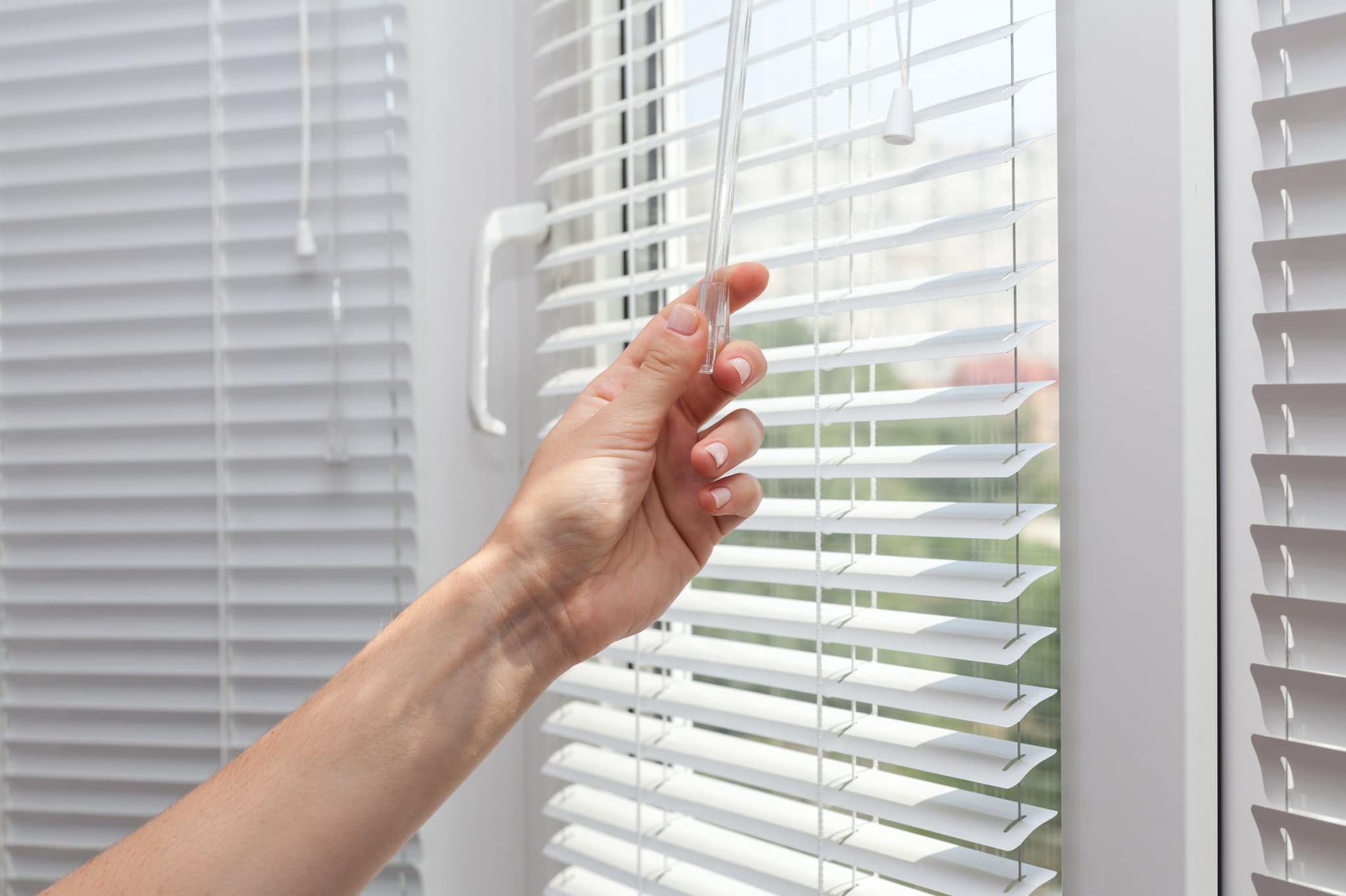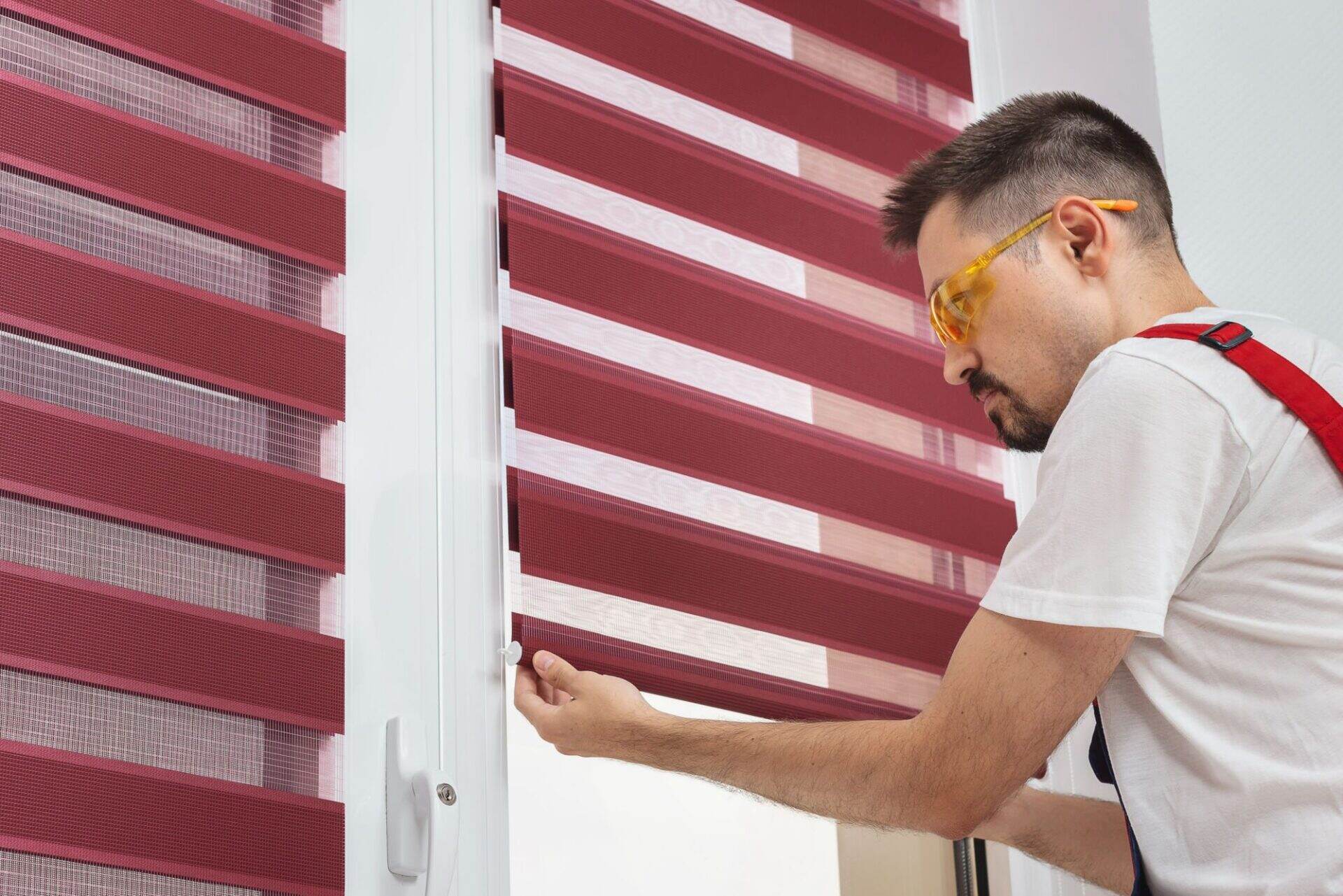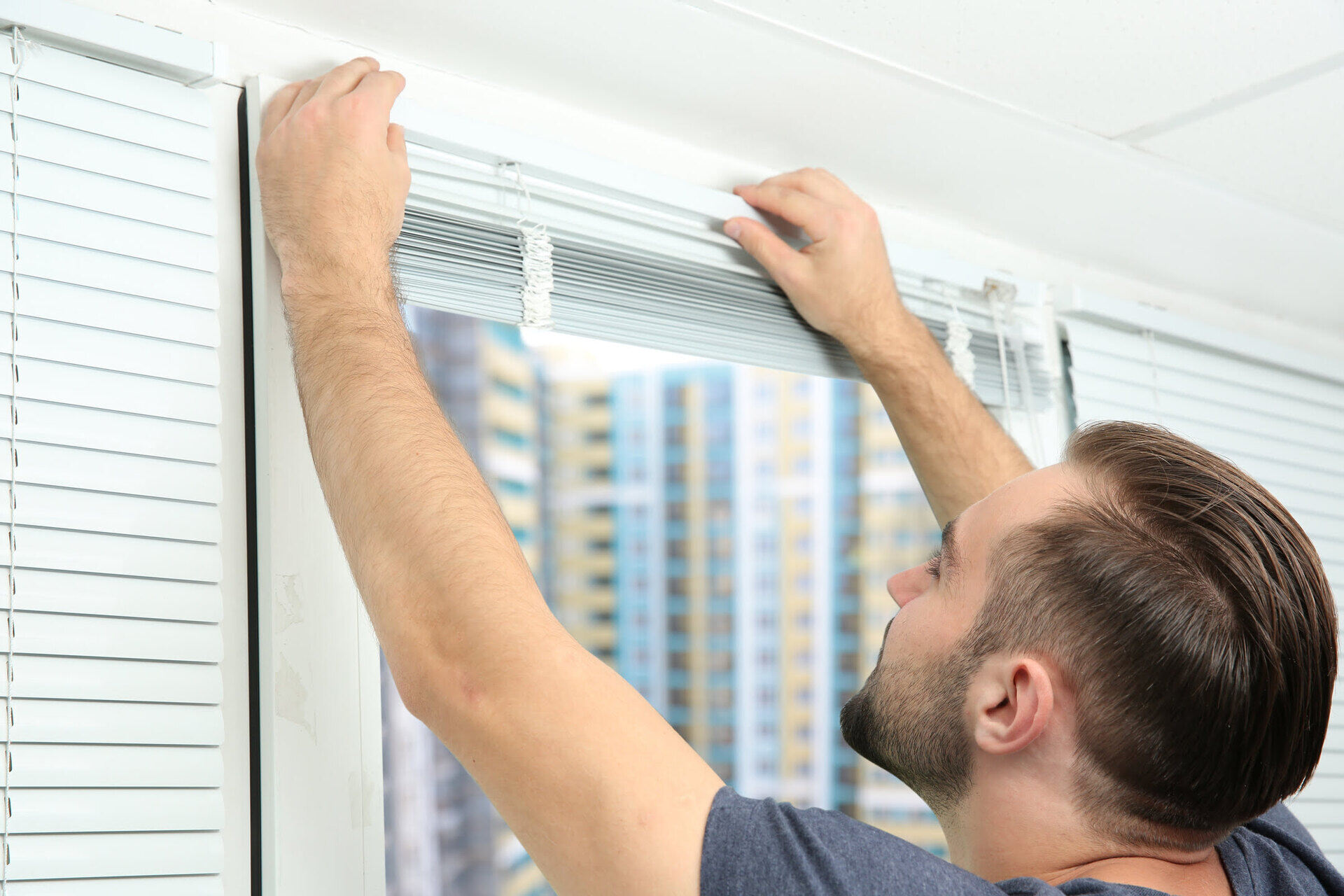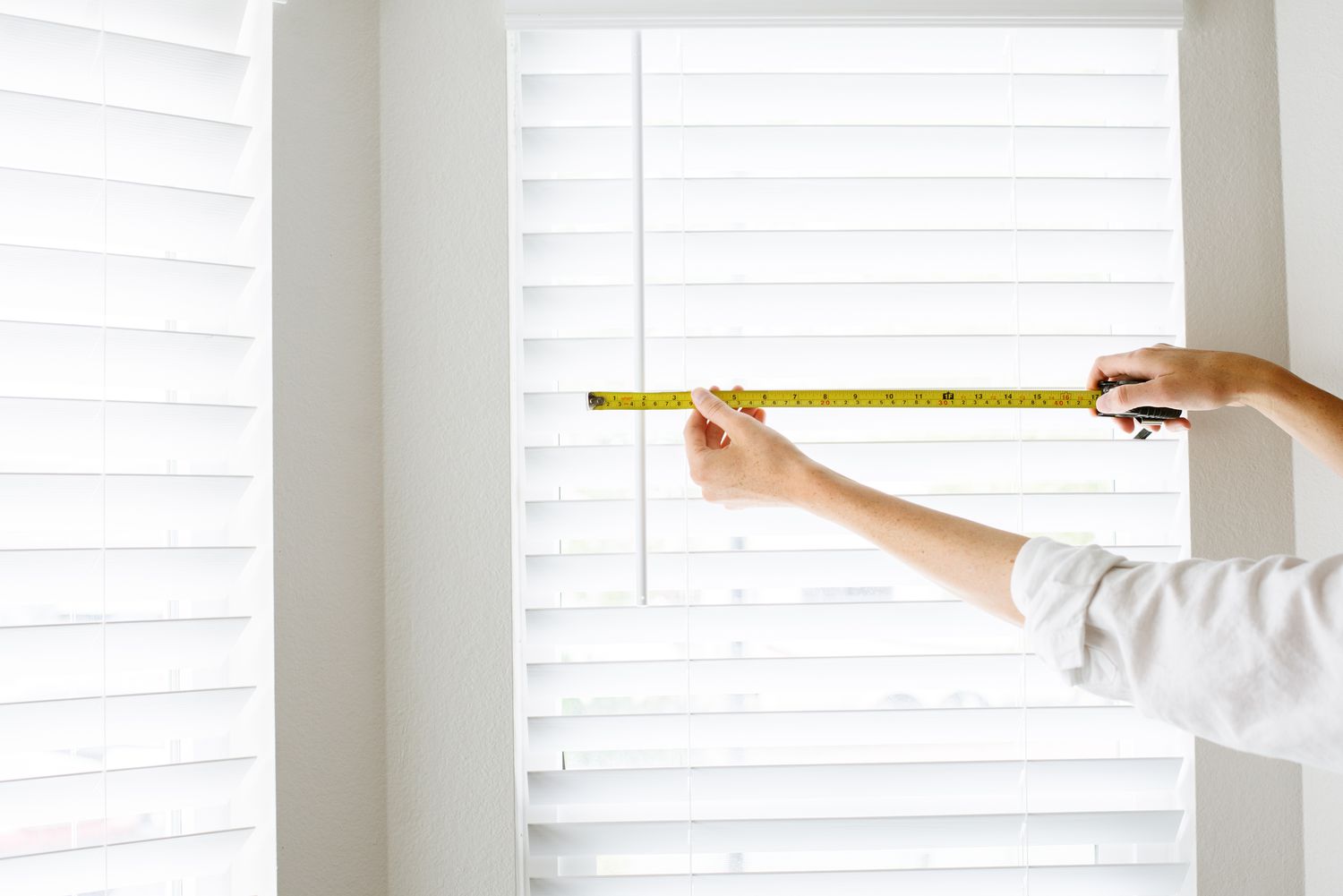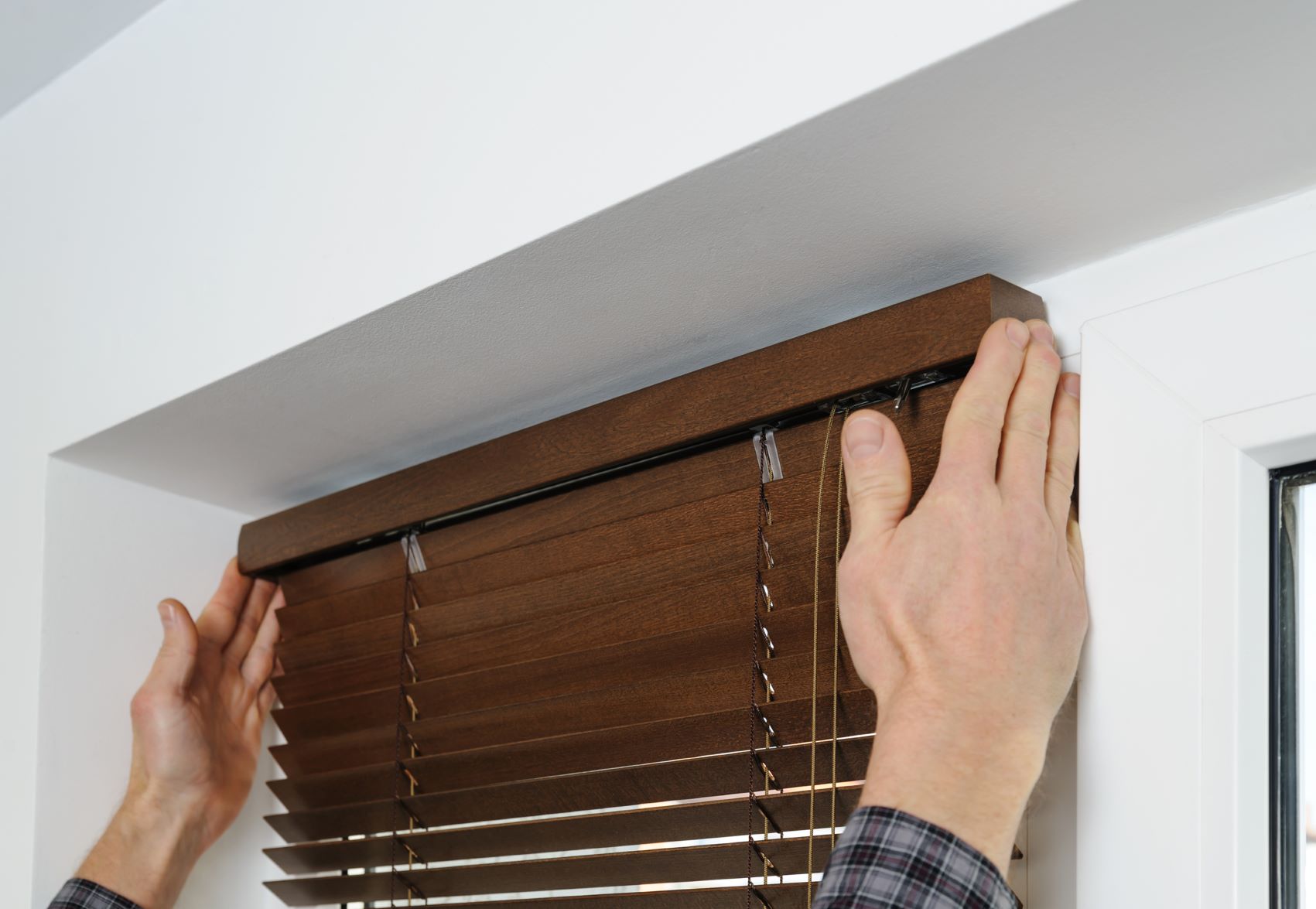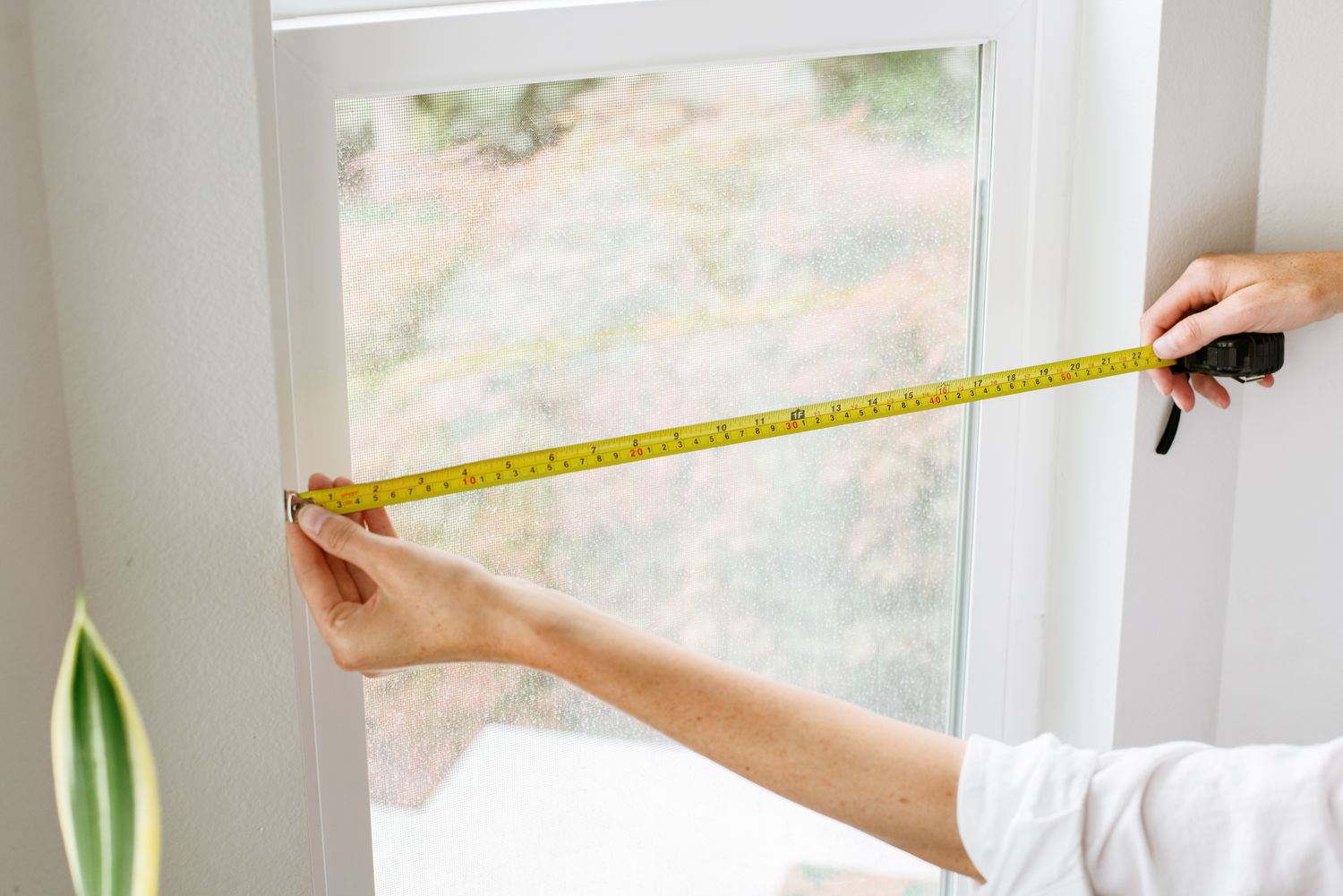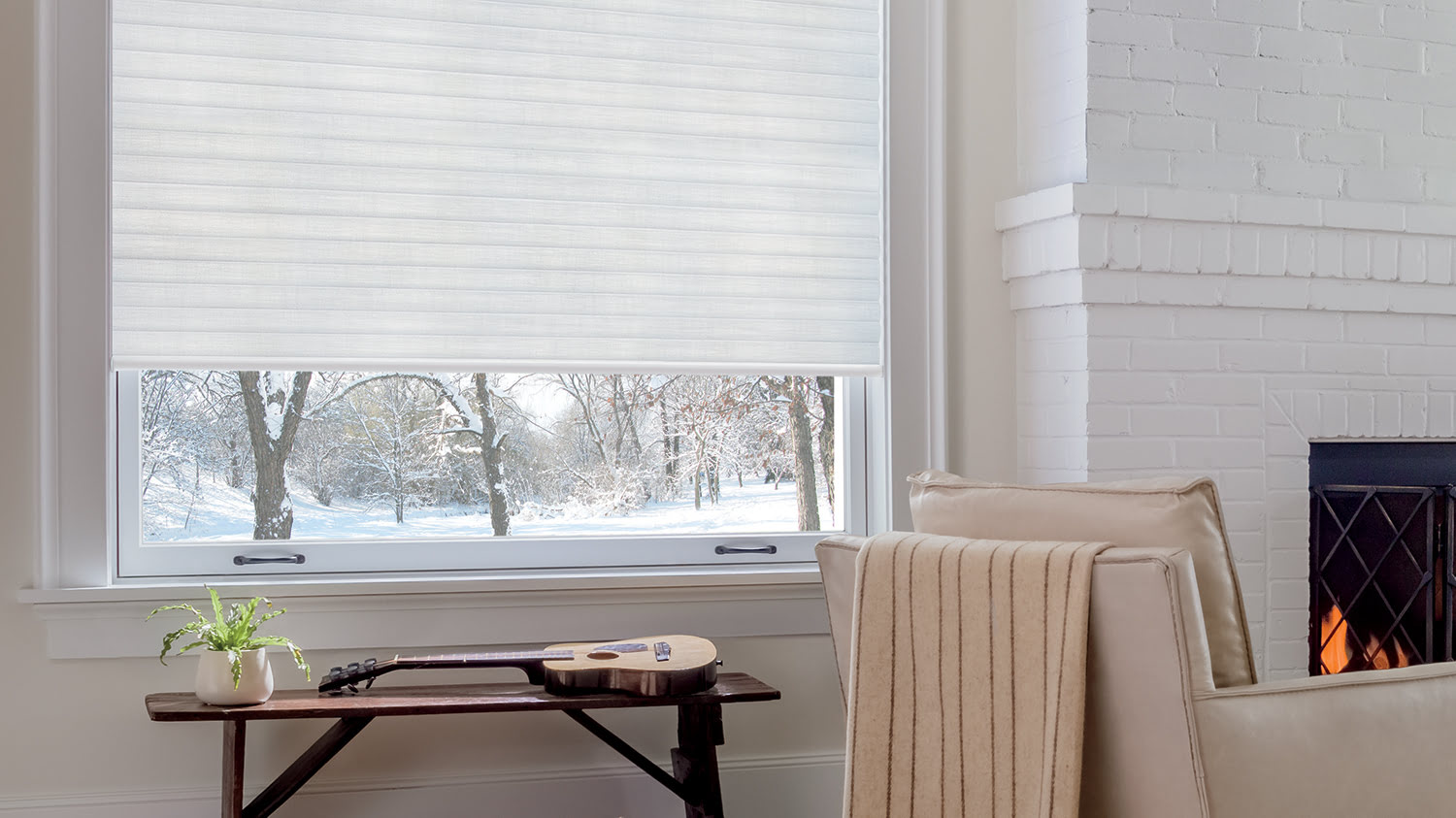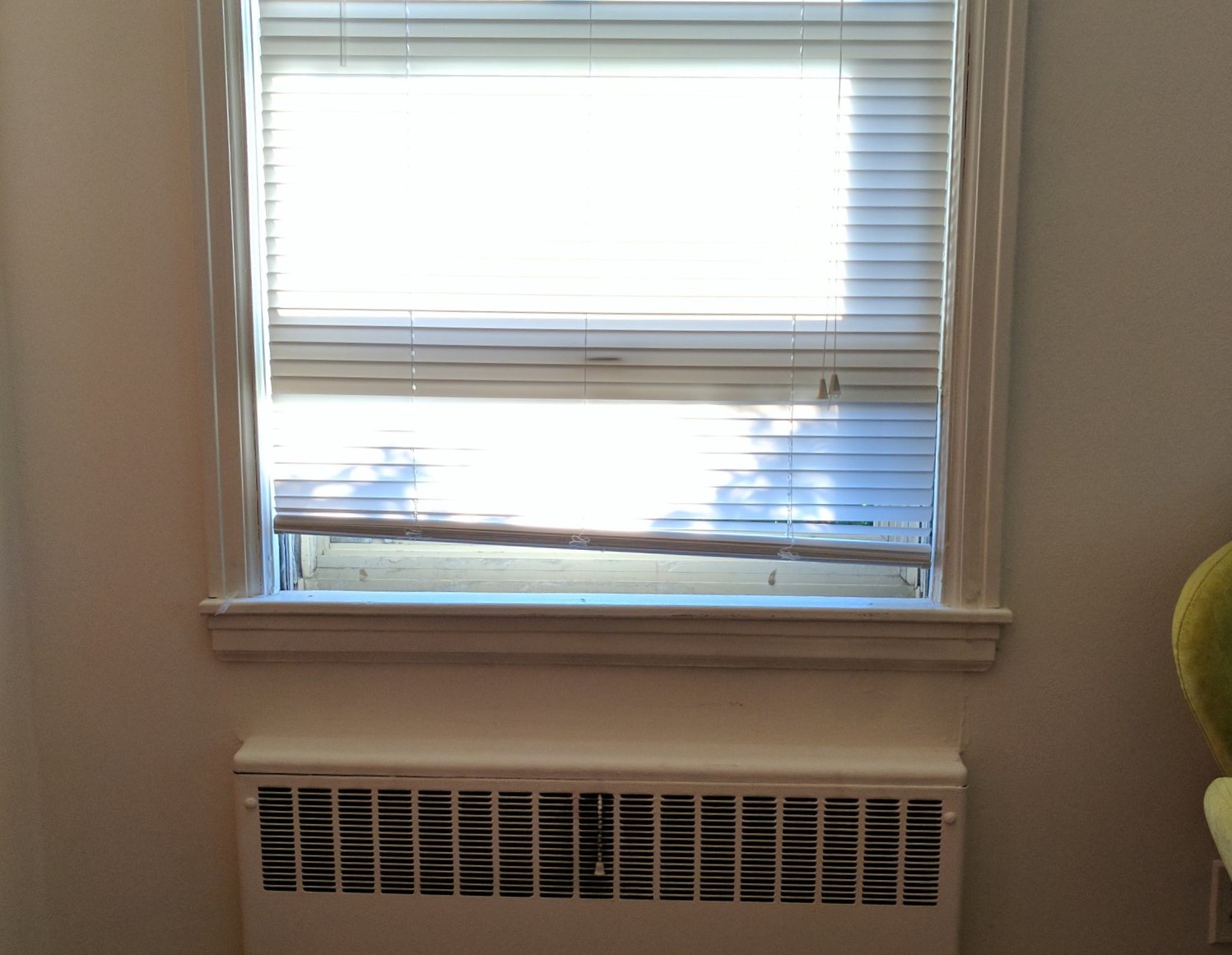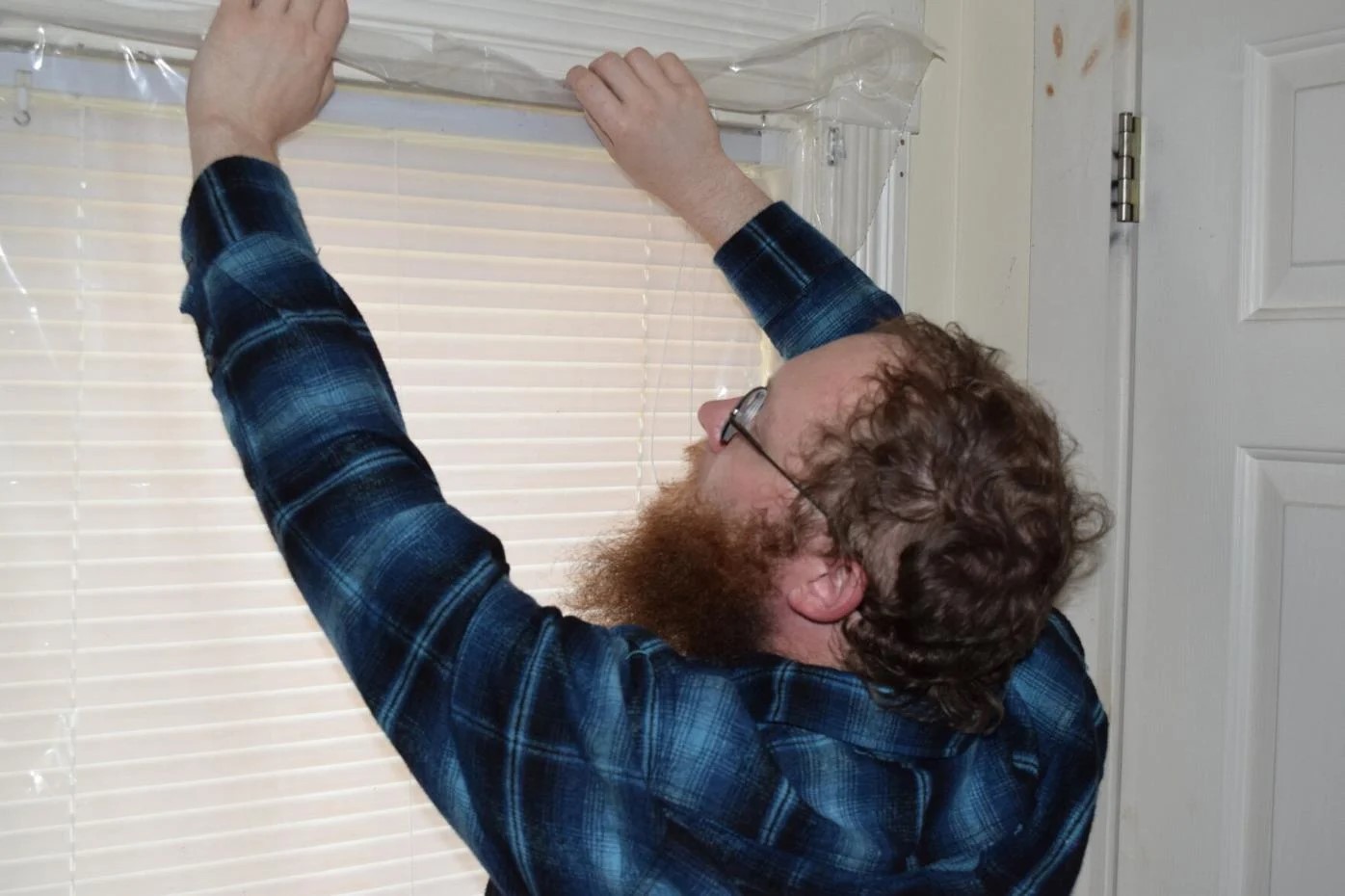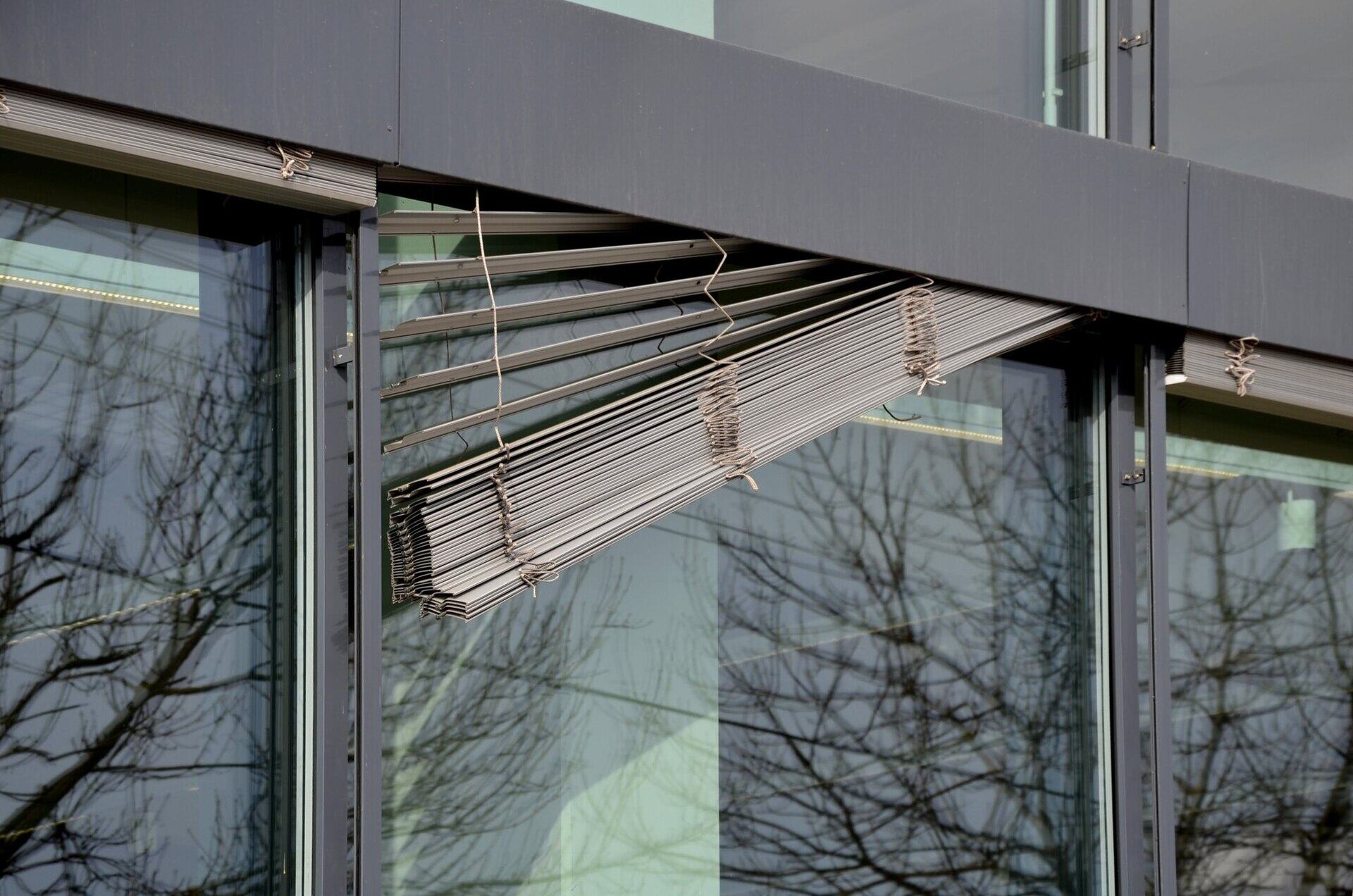

Articles
How To Repair Stuck Window Blinds
Modified: January 23, 2024
Looking for articles on how to repair stuck window blinds? Discover easy step-by-step guides and expert tips to fix your blinds and regain functionality.
(Many of the links in this article redirect to a specific reviewed product. Your purchase of these products through affiliate links helps to generate commission for Storables.com, at no extra cost. Learn more)
Introduction
Window blinds are a popular choice for homeowners seeking privacy, light control, and aesthetic appeal. However, over time, these blinds can become stuck, making it difficult to adjust or open and close them. This can be frustrating, especially when you want to let in natural light or enjoy a beautiful view.
Fortunately, in many cases, you can repair stuck window blinds and restore their functionality without the need for professional assistance. This article will guide you through the common causes of stuck window blinds, the tools needed for repair, and a step-by-step guide to fix the issue.
By following these simple steps, you can save time and money by avoiding the need to replace your blinds altogether. So, let’s dive in and learn how to repair stuck window blinds.
Key Takeaways:
- Don’t let stuck window blinds ruin your day. With the right tools and steps, you can easily repair them yourself, saving time and money on replacements.
- Regular maintenance, including cleaning, lubricating, and checking for obstructions, can prevent window blinds from getting stuck and ensure smooth, hassle-free operation.
Read more: How To Open A Stuck Window
Common Causes of Stuck Window Blinds
Before we jump into the repair process, it’s important to understand the common causes of stuck window blinds. By identifying the root cause, you can effectively address the issue and prevent it from recurring in the future.
1. Dust and Debris:
One of the most common reasons for stuck window blinds is the accumulation of dust and debris on the tracks and mechanism. Over time, this build-up can impede the smooth movement of the blinds, causing them to get stuck in one position.
2. Warped or Bent Slats:
If your blinds are made of materials that are prone to warping, such as wood or faux wood, they may become misshapen over time. This can lead to the slats overlapping or binding together, preventing the blinds from operating properly.
3. Loose or Broken Cords:
Window blinds typically rely on a system of cords to control their operation. If these cords become loose, tangled, or broken, it can hinder the movement of the blinds and cause them to get stuck in a particular position.
4. Damaged Mechanism:
In some cases, the internal mechanism of the blinds may become damaged or worn out. This could be due to age, frequent use, or improper handling. When the mechanism is compromised, it can prevent the blinds from functioning correctly.
5. Obstructions:
Objects such as furniture, decorations, or window treatments near the blinds can obstruct their movement. If the blinds come into contact with these obstructions, they can become stuck.
By understanding the common causes of stuck window blinds, you can narrow down the potential issues affecting your blinds. This will allow you to focus your repair efforts on the most likely culprits and increase your chances of successfully fixing the problem.
Tools Needed
Before you begin repairing your stuck window blinds, it’s important to gather the necessary tools to make the process as smooth as possible. Here are the tools you will need:
- Screwdriver: A screwdriver will be needed to remove any screws or fasteners holding the blinds in place.
- Duster or microfiber cloth: This will help you clean the blinds and tracks, removing any dust and debris that may be causing the obstruction.
- Lubricant: A silicone-based lubricant or a dry lubricant spray will be required to lubricate the moving parts of the blinds, ensuring smooth operation.
- Pliers: Pliers can come in handy for straightening any bent slats or adjusting cords that may be causing the blinds to get stuck.
- Scissors: You may need scissors to cut any tangled or damaged cords to replace them with new ones.
- Tape Measure: If you are dealing with blinds that need to be repositioned or adjusted, a tape measure will be useful for accurate measurements.
- Replacement Parts (if necessary): Depending on the issue you encounter, you may need to replace certain parts such as cords, slats, or the entire mechanism. Have these replacement parts on hand, just in case.
By gathering these essential tools beforehand, you will have everything you need to effectively repair your stuck window blinds. This will help streamline the process and ensure that you can complete the repairs efficiently.
Step-by-Step Guide to Repair Stuck Window Blinds
Now that you have the necessary tools, let’s dive into the step-by-step guide to repair stuck window blinds:
- Inspect the Mechanism: Begin by examining the mechanism of your blinds. Look for any visible damage or loose components. If you notice any, tighten screws, replace broken parts if necessary, or consider seeking professional help.
- Clean the Blinds and Tracks: Using a duster or microfiber cloth, thoroughly clean both sides of the blinds and the tracks. Remove any accumulated dust, dirt, or debris that may be hindering smooth operation. Pay attention to the corners and hard-to-reach areas.
- Lubricate the Moving Parts: Apply a small amount of silicone-based lubricant or a dry lubricant spray to the moving parts of the blinds, including the end caps, pulleys, and mechanism. This will help reduce friction and ensure smooth movement.
- Check for Obstructions: Take a close look at the area surrounding the blinds. Remove any objects, furniture, or window treatments that may be obstructing the blinds’ movement. Ensure that there is enough clearance for the blinds to operate smoothly.
- Straighten Bent Slats: If you notice any bent or warped slats, gently use pliers to straighten them out. Be careful not to damage the slats further. Straightening the slats will prevent them from overlapping and causing the blinds to get stuck.
- Replace Damaged Cords: If the cords are frayed, tangled, or broken, it’s best to replace them with new ones. Cut the damaged cords using scissors and attach the new cords following the manufacturer’s instructions. Ensure that the cords are properly tensioned.
- Reposition or Adjust the Blinds (if necessary): In some cases, the blinds may be misaligned or improperly positioned. Use a tape measure to ensure that the blinds are level and centered within the window frame. Make any necessary adjustments or repositioning to ensure optimal operation.
- Test the Blinds: After completing the repair steps, test the blinds by operating them up and down or side to side. Ensure smooth and effortless movement. If you still encounter any issues, review the steps and make any additional adjustments or repairs as needed.
Following these step-by-step instructions will guide you through the process of repairing your stuck window blinds. Remember to take your time, be gentle with the blinds, and pay attention to detail. By doing so, you can restore the functionality of your blinds and enjoy the benefits they provide.
Inspect the Mechanism
When your window blinds become stuck, the first step in the repair process is to inspect the mechanism. This involves closely examining the blinds to identify any visible damage or loose components that may be causing the issue.
Start by visually inspecting the entire blind system, paying close attention to the hardware, brackets, and cords. Check for any signs of wear or damage, such as loose screws, broken parts, or misaligned components. If you notice any damage or a loose mechanism, it’s important to tighten the screws or replace the broken parts. If the mechanism seems too complex or damaged beyond repair, it may be best to seek professional help.
Additionally, if your blinds use a cord control system, check for any tangles or knots in the cords. Untangle the cords and ensure that they are properly aligned and tensioned. Any issues with the cords can cause the blinds to operate unevenly or become stuck.
During the inspection, it’s essential to handle the blinds gently and avoid forcing any movements. If you encounter resistance or notice any broken parts that need replacement, take note of them and gather the necessary items to repair or replace them.
Inspecting the mechanism is a crucial step as it allows you to assess the overall condition of your blinds and determine if there are any specific areas that require attention. By identifying and addressing these issues early on, you can prevent further damage and ensure a successful repair process.
To repair stuck window blinds, start by checking for any obstructions or tangled cords. If the blinds are still stuck, try gently tapping the blinds with a rubber mallet to loosen them. If that doesn’t work, consider taking the blinds down and inspecting the mechanism for any damage or wear.
Read more: How To Remove Window Blinds
Clean the Blinds and Tracks
Once you’ve inspected the mechanism of your stuck window blinds, the next step is to thoroughly clean both the blinds and the tracks. Over time, dust, dirt, and debris can accumulate on the blinds and tracks, hindering their smooth operation.
Start by closing the blinds completely so you can access both sides of the slats. Use a duster or a microfiber cloth to remove any loose dust from the surface of the blinds. Work your way from top to bottom, ensuring that you clean each slat individually. If there are stubborn dust or stains, dampen the cloth slightly (avoid soaking it) and gently wipe the affected areas.
Next, focus on the tracks of the blinds. Use a vacuum cleaner with a brush attachment to remove any loose debris or dust from the tracks. Pay attention to the corners and crevices where dirt may accumulate. If necessary, use a small brush, such as a toothbrush, to dislodge any stubborn debris.
If there are visible stains or sticky residue on the blinds or tracks, create a solution of mild dish soap and warm water. Dip a clean cloth into the soapy water, wring out excess liquid, and gently wipe the affected areas. Avoid soaking the blinds or tracks with excessive water, as this can cause damage or warping.
After cleaning, allow the blinds and tracks to dry completely before moving on to the next step. Ensure that there is no moisture remaining as it can affect the functioning of the blinds.
Cleaning the blinds and tracks not only improves their appearance but also helps to eliminate any obstructions that may be causing the blinds to get stuck. By maintaining a clean and debris-free surface, you are setting the foundation for smooth and effortless operation.
Lubricate the Moving Parts
After inspecting and cleaning your stuck window blinds, the next step is to lubricate the moving parts. Proper lubrication helps to reduce friction and ensures smooth operation of the blinds.
Choose a suitable lubricant for your blinds. Silicone-based lubricants or dry lubricant sprays are recommended as they are lightweight, long-lasting, and won’t attract dust or debris.
Start by closing the blinds completely and turning them to expose the mechanism. Apply a small amount of lubricant to the end caps, pulleys, and any other moving parts that you can access. Be cautious not to overapply the lubricant, as it may drip onto the slats or tracks.
After applying the lubricant, use the control mechanism to operate the blinds up and down or side to side several times. This will help distribute the lubricant evenly on all moving parts and allow it to penetrate the mechanisms.
If you notice any areas that still feel stiff or resistant even after lubrication, consider using pliers to gently work the mechanism back and forth. This can help loosen any stuck components and further facilitate smooth movement.
Remember, lubrication should be done sparingly and only on the relevant moving parts of the blinds. Excessive lubrication can attract dust and debris, making the problem worse over time. Regular application of lubricant, perhaps once or twice a year, can help prevent future issues with your window blinds.
Proper lubrication is essential to maintaining the functionality and longevity of your blinds. By ensuring that the moving parts are well-lubricated, you can enjoy smooth and effortless operation, freeing your blinds from getting stuck.
Check for Obstructions
In order to repair your stuck window blinds, it’s important to check for any obstructions that may be hindering their movement. Objects or furniture near the blinds can impede their operation and cause them to become stuck.
Start by examining the area surrounding your window blinds. Move any furniture, decorations, or window treatments that may interfere with the blinds’ movement. Make sure there is enough clearance for the blinds to operate smoothly.
Next, check for any cords or strings that may be tangled or caught on nearby objects. Untangle any cords and ensure they are properly arranged and tensioned. This will prevent any unnecessary tension or resistance that can hinder the blinds from operating smoothly.
If you have vertical blinds, check that each slat hangs freely and is not obstructed by another slat. Adjust the slats as needed so that they can move independently without getting stuck on each other.
It’s also important to inspect the bottom rail of the blinds. Sometimes, the cords or strings can become entangled or caught in the rail, preventing the blinds from moving freely. Carefully examine the bottom rail, untangle any cords, and ensure that they move smoothly within the rail.
By checking for obstructions and ensuring the area surrounding your window blinds is clear, you can help prevent your blinds from becoming stuck in the future. Creating a conducive environment for their operation will not only aid in the repair process but also enhance the overall functionality of your blinds.
Conclusion
Repairing stuck window blinds is a task that can be easily accomplished with the right approach and tools. By following the step-by-step guide outlined in this article, you can identify and address the common causes of stuck blinds, restore their functionality, and avoid the need for costly replacements.
Inspecting the mechanism, cleaning the blinds and tracks, lubricating the moving parts, and checking for obstructions are crucial steps in the repair process. Each step plays a vital role in ensuring that your blinds operate smoothly and efficiently.
Remember, patience and attention to detail are key when repairing your blinds. Take the time to carefully inspect, clean, and lubricate the blinds to achieve optimal results. If you encounter any complex issues or are unsure about the repair process, it’s always a good idea to seek professional help.
By maintaining your window blinds and addressing any issues promptly, you can prolong their lifespan and enjoy the benefits they provide, such as privacy, light control, and aesthetic appeal.
So, don’t let stuck window blinds frustrate you any longer. Take the necessary steps outlined in this article and restore your blinds to their former functionality. Enjoy the smooth operation and the ambiance they add to your home.
Frequently Asked Questions about How To Repair Stuck Window Blinds
Was this page helpful?
At Storables.com, we guarantee accurate and reliable information. Our content, validated by Expert Board Contributors, is crafted following stringent Editorial Policies. We're committed to providing you with well-researched, expert-backed insights for all your informational needs.
